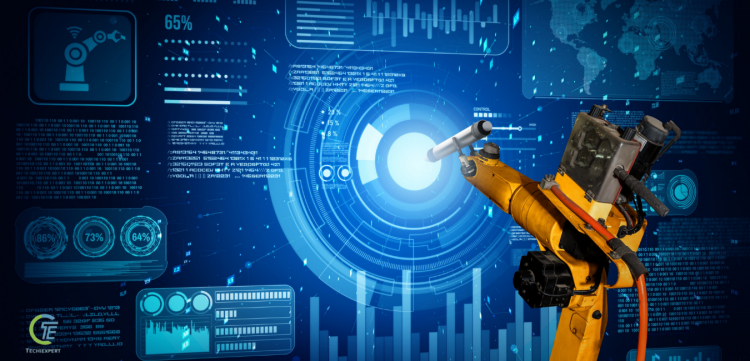Source – https://www.techiexpert.com/
As machine learning has advanced throughout time, a multitude of sectors has utilized it to innovate and streamline corporate processes. AI and machine learning have been used to improve client experiences in a variety of industries, including healthcare, commerce, industrial, defense, and academia. Machine learning has revolutionized the way tiny data is processed. It has sped up the processing to seconds.
Professor Gabriel Gomila’s microscopic bioelectrical classification group at Catalonia’s Institute for Bioengineering has been studying a cell type using a sort of microscope called scanning dielectric force volume microscopy. They created this technique in recent years to construct maps of the dielectric constant, an electrical physical parameter. Researchers used this method to speed up the processing of nanoscale information. In this article, let us explore more on how machine learning is used to reduce data time processing.
What can this study on machine learning provide?
When Hans and Zacharias Janssen — a Dutch father and son — built the world’s first microscope in 1590, our interest in what happens at the tiniest levels has resulted in the development of extremely powerful equipment. In 2021, researchers can create precise maps of a variety of physical and chemical characteristics using non-optical approaches like scanning force microscopes, besides optical microscopy technologies that allow us to view microscopic particles in higher definition than it’s ever been. Here’s what this study can provide.
- Because each of the macromolecules that make up cells—lipids, proteins, and nucleic acids—has distinctive dielectric properties, a mapping of this feature is effectively a representation of cell constitution.
- They created an approach that outperforms the existing conventional optical approach, which entails the use of a fluorescent dye that can disturb the cell investigation.
- Their method eliminates the need for any highly destabilizing external agents.
- However, the implementation of this technique necessitates a lengthy post-processing step to translate the observed data points into physical magnitudes, which takes a long time in eukaryotic cells.
- A workstation computer can take months to process a single image. That is because it uses locally recreated geometrical prototypes and calculates the dielectric constant as pixel by pixel.
The researchers used a novel methodology to speed up the microscopic processing of data in this new work, which was a recent issue of the journal Small Methods. Rather than using traditional computational approaches, they applied machine learning models this time. The outcome was stunning after being instructed; the ML algorithm could generate a composition map of the cells with dielectric biochemical within seconds. No foreign compounds were used in the experiment, which is a long-sought objective in cell biology composition characterization. They were able to accomplish these quick results by employing a complex algorithm known as neural networks, which simulate the way human brain neurons function. The key points to be considered are:
- The investigators employed dried-out cells in their concrete evidence work to avoid the tremendous impact of water in dielectric observables owing to its increased dielectric constant.
- They also focused on fixed cells that are in a fluid state. They could accurately map the biomolecules that resulted in eukaryotic cells by comprehensively comparing the dry and liquid versions.
- Plants, animals, fungi, and other creatures comprise these multi-structured cells. The approach will be used to electrically responsive live cells, such as neurons, where significant electrical impulses happen as its next phase in this project.
Biomedical Application
The researchers confirmed their observations by comparing them to well-known aspects of cell architecture, like the lipid-rich structure of the cell membrane and the extensive amount of nucleic acids found in the nucleus. They’ve made it possible to analyze enormous numbers of cells in record time thanks to this effort. This research study provides biologists with a powerful tool for doing fundamental research and also prospective practical diagnostics.
Variations in the cell’s dielectric properties are being investigated as potential indicators for disorders like cancer and neurological diseases. This is the first experiment to produce a microscopic biological composition model from dielectric measurements of dried eukaryotes, which are notoriously difficult to trace owing to their complicated three-dimensional geometry.
Finally, with such progression in the research and experimentation, it is needless to say we are transforming into the new phases of machine learning, with grace, intelligence, and facts. While the work on this nanoscale dielectric constant has just filled few gaps, the future is more dynamic in the aspects of data processing. What took months is now taking seconds, and that is undeniably a revolution of its own. With such applications in the biomedical industry, who would guess it can turn on a real-time diagnosis of many deadly diseases?
